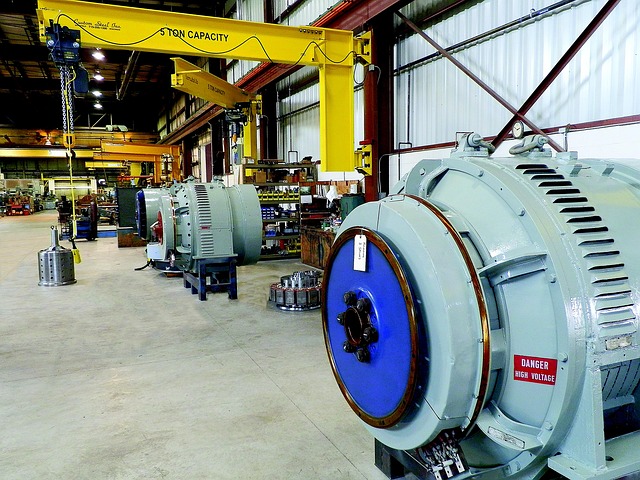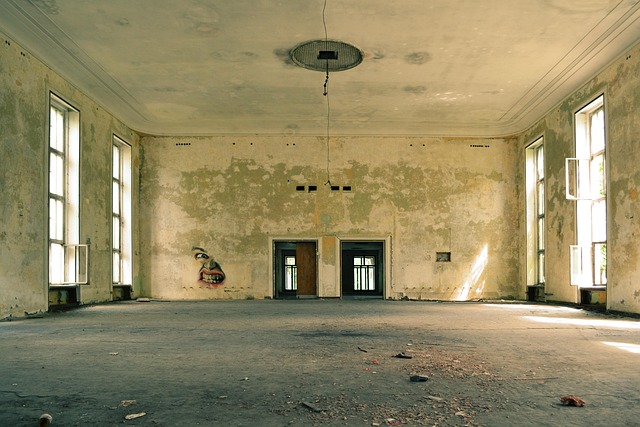This text provides comprehensive guidance on concrete foundation crack repair, emphasizing prompt identification of crack types through visual inspections. Key points include measuring crack width and depth, assessing active movement, examining surrounding cracks, and understanding various repair methods like carbon fiber patching, epoxy injection, and hydraulic cement patching for different severities. It differentiates between non-structural cracks that may stabilize over time versus those requiring professional assessment for underlying issues. The guide recommends material selection based on crack dimensions (e.g., epoxy for narrow, polyurethane foam for wider), proper preparation techniques, and best practices for long-lasting repairs. Proactive measures during construction are highlighted to prevent future foundation cracks, with special emphasis on avoiding DIY mistakes and addressing root causes for effective concrete repair solutions.
“Foundation cracks in concrete structures are more than just aesthetic concerns—they can compromise structural integrity and pose potential safety risks. This comprehensive guide delves into the intricate world of concrete repair, addressing various types of foundation cracks and offering practical solutions. From identifying non-structural issues to evaluating severe damage, we explore effective methods for crack repair and sealing. Learn about best practices, preventive measures, and common mistakes to avoid, ensuring your concrete foundations remain robust and durable.”
Understanding Concrete Foundation Cracks: Causes and Types

Concrete foundation cracks can range from small, hairline fractures to large, structural gaps. Understanding the causes and types is crucial for effective concrete repair. The most common causes include settlement, heave, and movement due to ground conditions like expansive clay or shifting soil. Settlement occurs when the weight of the structure causes the soil below to compact, leading to cracks as the foundation adjusts. Heave, on the other hand, happens when moisture in the soil expands, pushing upward against the foundation.
There are several types of concrete foundation cracks: hairline cracks, diagonal cracks, vertical cracks, and horizontal cracks. Hairline cracks are thin, shallow fractures often caused by minor movements or temperature fluctuations. Diagonal cracks slope downward from a corner, usually indicating settlement issues. Vertical cracks run straight up and down, suggesting significant structural problems, while horizontal cracks indicate potential severe foundation movement or heave. Prompt identification of crack types is essential for selecting the appropriate concrete repair method.
Assessing the Scope of Damage: Visual Inspection Techniques

When assessing concrete crack repair needs, a thorough visual inspection is crucial. Look for the extent and severity of cracks, considering both their width and depth. Use a level or straight edge to measure the crack’s dimensions at multiple points along its length. This data will help determine the appropriate repair method—whether it’s a simple filling or more complex structural reinforcement.
During the visual assessment, pay close attention to any signs of active movement, like uneven floors or bulging walls. These can indicate deeper issues that might require professional intervention. Additionally, inspect surrounding areas for cracks that could be related, as they may suggest underlying problems that need addressing for effective long-term concrete repair.
Common Methods for Foundation Crack Repair

Crack repair in foundation walls is a common concern for homeowners, and several methods are available to address this issue. The choice of technique depends on the severity and type of cracks, as well as personal preferences. One popular approach is carbon fiber patching, which involves applying a composite material over the crack to reinforce and stabilize it. This method is effective for preventing further damage and can significantly enhance the structural integrity of the foundation.
Another common concrete repair strategy is epoxy injection. This technique requires drilling into the crack to insert a specialized epoxy compound that fills and strengthens the void. Epoxy injection is particularly useful for wider cracks or those affecting larger areas, offering a durable and long-lasting solution. For smaller, hairline fractures, hydraulic cement patching is often employed. It’s an easy-to-use material that hardens over time, providing a solid fix without extensive preparation.
Non-Structural Cracks: When to Address and When to Monitor

Non-Structural cracks in foundations, while concerning, often don’t necessitate immediate concrete repair. These cracks, typically smaller and shallow, may appear due to normal settlement or minor ground movements. Monitoring such cracks is crucial—if they widen over time or show signs of progression, it’s time to act. Even seemingly insignificant cracks can be indicative of larger issues beneath the surface, like shifting soil or inadequate foundation support.
Regular visual inspections are key to determining whether non-structural cracks require intervention. If cracks remain stable and don’t exhibit any growth, they might not pose a significant threat. However, if you notice any changes in their appearance or location, it’s best to consult with a professional to assess the severity and discuss appropriate concrete repair methods.
Structural Integrity: Evaluating Severe Cracks and Heavily Damaged Areas

When it comes to severe cracks or heavily damaged areas in a foundation, assessing structural integrity is paramount for any concrete repair project. These signs of wear and tear can indicate instability and potential failure if left unaddressed. Professional inspectors should be engaged to evaluate such conditions thoroughly. They can pinpoint the extent of damage, determine its cause (such as settlement, shifting soils, or poor original construction), and assess whether the foundation is safe for occupation and structural soundness for future concrete repair work.
In cases where cracks are broader than a few millimetres or show signs of progression, it’s crucial to understand that these are not merely cosmetic issues. Heavily damaged areas might require more intensive concrete repair methods, including underpinning or structural reinforcement, to ensure the foundation’s long-term stability and protect the integrity of the entire building.
Material Options for Effective Crack Filling and Sealing

When it comes to repairing foundation cracks, choosing the right material is key for effective filling and sealing. There are several options available in the market, each with its unique properties and benefits. For concrete repair, epoxy injections are a popular choice due to their high strength and chemical resistance. This two-part compound hardens quickly, creating a strong bond that can fill even narrow cracks completely.
Another commonly used material is polyurethane foam, ideal for wider cracks. It expands upon application, filling the crack from within and providing excellent water resistance. Polyurethane foam is lightweight and easy to work with, making it suitable for both structural and aesthetic concrete repair. Each material has its advantages, and selecting the right one depends on factors like crack width, depth, and expected environmental conditions.
Best Practices for Long-Lasting Concrete Repair

When repairing foundation cracks in concrete, adopting best practices ensures long-lasting results. The first step is to properly prepare the crack by cleaning and etching the surface to improve adhesion. Use a pressure washer to remove debris and loose concrete, then apply an etch or acid solution to create a rough texture. This process allows the repair material to bond securely with the existing concrete.
After preparation, select high-quality repair materials suitable for concrete. Epoxy injections are often recommended for structural integrity, especially in wide cracks. Fill the crack completely and ensure no air pockets remain. Properly seal the repair area with a waterproof membrane to prevent future damage from moisture intrusion. Regular maintenance, including reapplication of sealer every few years, will further extend the life of the concrete repair.
Preventive Measures: Strengthening Foundations for Future Durability

To prevent foundation cracks and ensure long-term durability, taking proactive measures during construction or renovation is crucial. One effective strategy involves enhancing the structural integrity of the foundation itself. This can be achieved by using high-quality materials and techniques, such as steel reinforcement bars or mesh, to strengthen concrete before it sets. Proper compaction and settlement monitoring are also essential; ensuring the soil beneath the foundation is adequately compacted and regularly checking for any post-construction shifts can prevent cracks from forming due to uneven settling.
Regular maintenance plays a vital role in concrete repair. Inspections at least once a year can help identify potential issues early on, allowing for quick action before cracks widen or cause further damage. Applying waterproof membranes and sealers to the surface of the foundation can also protect against moisture intrusion, which is a common cause of concrete deterioration. By implementing these preventive measures, homeowners and builders can significantly reduce the risk of future foundation cracks, ensuring a more durable and reliable structure.
Common Mistakes to Avoid During Foundation Crack Repair

When repairing foundation cracks, it’s crucial to avoid common pitfalls that can compromise the long-term integrity of your structure. One major mistake is attempting DIY repairs without proper knowledge and tools. Concrete repair requires specialized equipment and expertise to ensure the fix is both effective and lasting. Using subpar materials or incorrect techniques can lead to further damage and even accelerate the deterioration process.
Another error to steer clear of is neglecting the root cause of the crack. Simply patching up the surface might offer a temporary solution, but if underlying issues like poor drainage, soil settlement, or structural problems aren’ addressed, new cracks are likely to appear. Thorough inspection and identifying the primary cause are essential steps in successful foundation crack repair, ensuring your home’s stability and longevity.
